#queen sophia of the hellenes
Explore tagged Tumblr posts
Text
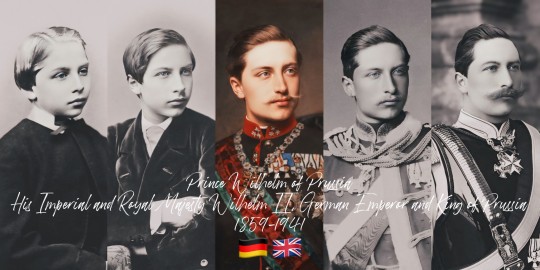
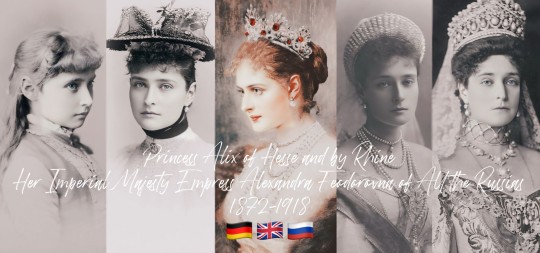
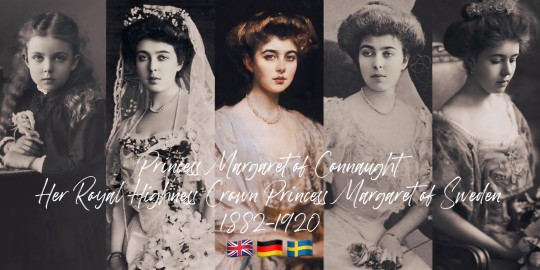
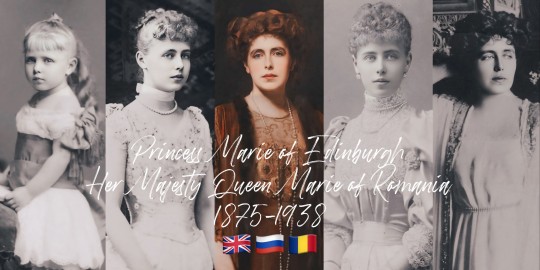

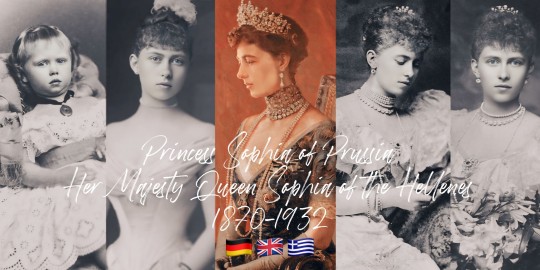
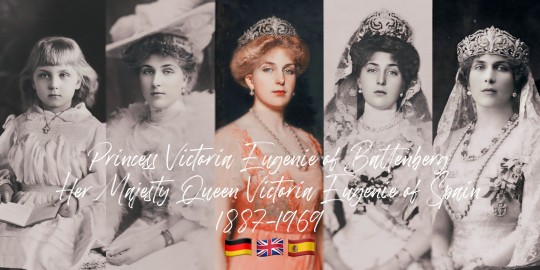

"The Monarchs of Queen Victoria’s Legacy"
Wilhelm II was the first of Queen Victoria's grandchildren to ascend to a throne, becoming German Emperor in 1888. His reign initiated the lineage of monarchs descended from Victoria. The last to be crowned was Marie of Romania in 1914, marking the end of an era for Victoria's royal progeny.
Queen Maud of Norway holds the distinction of having the longest tenure as Queen Consort among Queen Victoria's grandchildren, with a reign that spanned 33 years. Her time on the throne was characterized by a harmonious blend of British heritage and Norwegian culture, leaving a legacy of benevolence and cultural patronage. Conversely, Queen Sophia's role as Queen Consort of the Hellenes was the briefest, lasting just about 4 years due to the political upheavals of World War I and Greece's National Schism, which led to her husband's abdication. Despite the short span, her resilience and dedication to her royal duties remained unwavering.
The execution of Empress Alexandra Feodorovna was a deeply tragic event, reflecting the brutal reality of the Russian Revolution. On the night of 16-17 July 1918, she and her family were executed by Bolshevik revolutionaries in Yekaterinburg. Alexandra witnessed the murder of her husband, Tsar Nicholas II, before she herself was killed with a gunshot to the head. The violence of that night brought an abrupt and grim end to the Romanov dynasty, extinguishing the lives of the last imperial family of Russia in a stark and merciless manner. Her death marked the first among Queen Victoria’s crowned grandchildren. In contrast, Queen Victoria Eugenie of Spain lived through the upheavals of the 20th century, witnessing the restoration of the Spanish monarchy. She passed away in 1969, the last of Victoria’s crowned grandchildren, her life reflecting the dramatic changes of her time.
George V’s United Kingdom, a realm where tradition blends with modernity, continues to stand firm. The monarchy, a symbol of continuity, has weathered the storms of change, its crown passed down through generations, still reigning with a sense of duty and connection to the people.
Maud of Norway’s legacy endures in the serene beauty of Norway, where the monarchy remains a cherished institution. Her reign, characterized by a quiet strength and a nurturing presence, is remembered fondly, and the royal house she helped establish continues to flourish.
Margaret of Connaught’s Swedish monarchy, into which she married, stands resilient. Though she never became queen, her descendants uphold the traditions and values she embodied, maintaining the monarchy as a pillar of Swedish national identity.
Victoria Eugenie of Spain saw the Spanish monarchy navigate the tumultuous waters of the 20th century, enduring a republic and a dictatorship before being restored. Today, it stands as a testament to resilience, with her bloodline still on the throne, embodying the spirit of reconciliation and progress.
In stark contrast, the fates of other monarchies were marked by tragedy:
Wilhelm II witnessed the fall of his German Empire in the aftermath of World War I. His abdication marked the end of an era, and he spent his remaining years in exile, a once-mighty emperor without a throne, reflecting on the lost glory of his realm.
Sophia of Hellenes experienced the disintegration of the Kingdom of Greece amidst political upheaval. The monarchy, once a symbol of national unity, was abolished, leaving her and her family to face the harsh reality of a world that had moved beyond the age of empires.
Alexandra Feodorovna’s Russian Empire crumbled during the Bolshevik Revolution. The tragic end of the Romanov dynasty saw her and her family executed, their fates sealed by the tides of revolution that swept away centuries of monarchical rule.
Marie of Romania’s kingdom, once a beacon of hope in the aftermath of World War I, eventually succumbed to the forces of history. The monarchy was abolished after World War II, and the royal family faced the stark reality of a republic.
#wilhelm ii#Marie of Edinburgh#Marie of romania#George v#alix of hesse#alexandra feodorovna#Margaret of connaught#Margaret of Sweden#Victoria eugenie of Spain#Sophia of Prussia#Sophia of Hellenes#Sophia of greece#queen maud#princess maud of wales#Victoria eugenie of battenberg
38 notes
·
View notes
Text









27/03 - Favorite tiara no longer in a royal family
Queen Sophia of the Hellenes' Diamond Tiara
18 notes
·
View notes
Text
Ήρα Αιώνια - Íra Aiónia - Eternal Hera
The Temple of Eternal Hera is a religious organization whose purpose is to promote education, understanding, and worship of the Great Goddess Hera. We base our beliefs not just in the mythos, but in the living practice of the ancient and classical Hellenes, who viewed Our Queen as the perfect model of Womanhood.
We believe the Gods are deathless and eternal. We are a recon-based revivalist Hellenist community - thoroughly grounded in the history of our theological forebears, living in our present, with an eye to the future. Our faith may have died, but our Gods have remained. As we return to Them, we must apply the ancient wisdom to our modern lives.
As Hellenists, we revere and adore all of the Gods, but Íra Aiónia is devoted to the Queen of the Heavens. She is the ideal model of a Woman, of a Wife, of a Mother, of a Leader.
Our Values
We look to the wisdom of our forebears and the nature of Queen Hera to guide our values, which are:
Eusebia - a sense of reverence and duty to the Gods
Xenia - hospitality and generosity
Sophia - the unending pursuit of wisdom
Hagneia - spiritual purity
Kharis - giving without expectation and receiving with gratitude
Amyna - the stalwart defense of Hera's domain, especially women and children
Our Tenants
We affirm that Hera is the Queen of the Gods; mighty and worthy of no less praise and worship than Zeus, Her King.
We affirm that the Gods are deathless and eternal.
We affirm the reality of the Gods and do not consider Them metaphorical.
We affirm that the nature of ancient worship reflects the existence of multiple pantheons.
We affirm that we are simply mortals: we do not speak for the Gods, nor do we have special knowledge of Them.
We affirm that Hera is the beloved and ideal model of Womanhood and Motherhood, as believed by the ancients, not the cruel and bitter tormenter portrayed by popular culture and certain man-created myths.
We affirm that our traditions and beliefs are based in history, while understanding that we live in a different age.
We affirm that we are all students of one truth, and that we only know parts of the whole.
Virtues of Hera
Hera is the model of Womanhood, Motherhood, and Leadership. These virtues of Hers are an inspiration to all who revere Her.
Dignified
Loyal
Courageous
Mature
Wise
Temperate
Passionate
Protective
Creative
Nurturing
Generous
Unifying
Marriage
Blessed Hera is the Goddess of Marriage, and we view marriage as a sacred rite. As we do not have a priesthood, we do not perform marriage rituals. We recognize the blessed nature of marriage between any two consenting adults.
We consider the following to be blasphemy: forced marriage; marriage between children; marriage between adults and children; predatory marriage; forced polygamy; cheating; and spousal abuse.
Marriage is a vow that must not be taken or broken lightly. However, we affirm the right to divorce when the continuation of a marriage violates the sanctity of the rite or the dignity of the participants. We believe that it is between the individuals and the Queen of the Heavens to decide.
Cult Traditions
While these traditions are not based in ancient Greek worship and customs, we find meaning in them and embrace them.
Wednesday as Hera's sacred day
Bead-counted prayers and mantras (such as Her epithets or short, self-written prayers)
Associating each month with one of Hera's epithets or virtues
Discord membership will be taken as express agreement with our values and tenants. Additional rules will be posted in the Discord, and are intended only to govern activity therein.
This pinned post serves as an active document that will be updated as this concept becomes more fleshed out with time.
#Hera#Goddess Hera#Queen Hera#Eternal Hera#Temple of Eternal Hera#hellenic polytheism#hellenism#hellenic pagan#hellenic paganism#Hera Cult#religious community#greek polytheism#greek paganism#greek pantheon
63 notes
·
View notes
Note
Please share more of your postcard collection with us? :)
Gladly!! 🫶🏻
These four were the first ones I bought.
1. Alexandra, Grand Duchess of Mecklenburg-Schwerin with her firstborn, Frederick Franz.
2. Alexandra and Frederick Franz with their little son.
3. Then Crown Princess Sophia of the Hellenes with her children.
4. Not sure if they were already King and Queen when this photo was taken but Constantine and Sophia with their children.

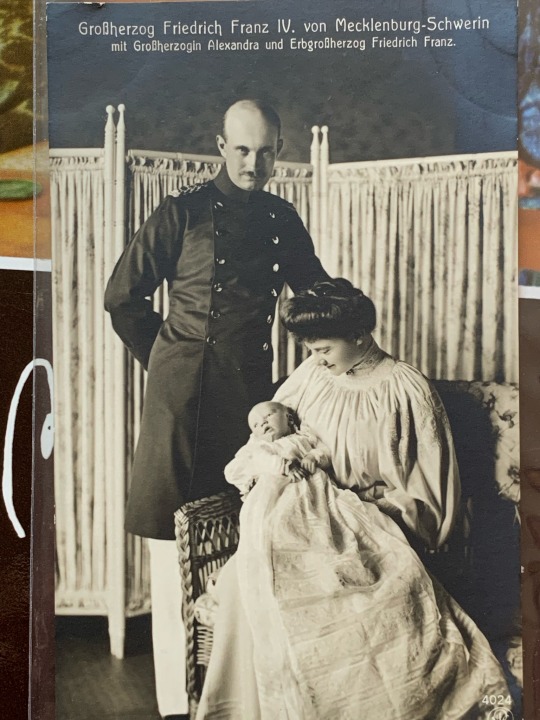
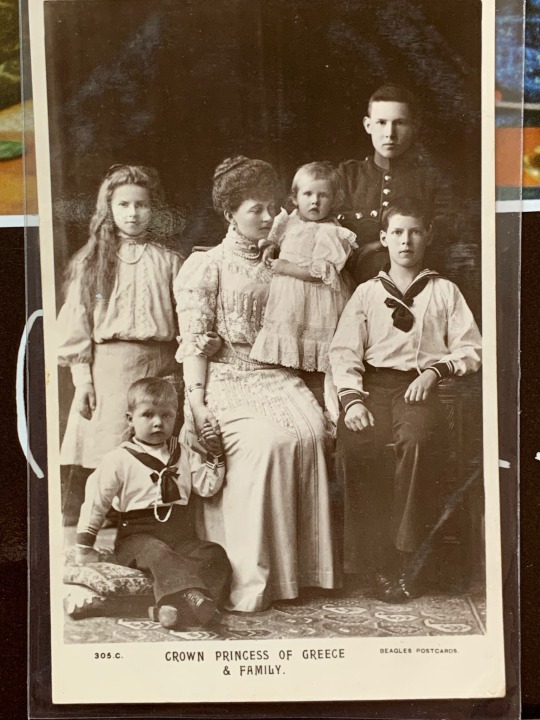
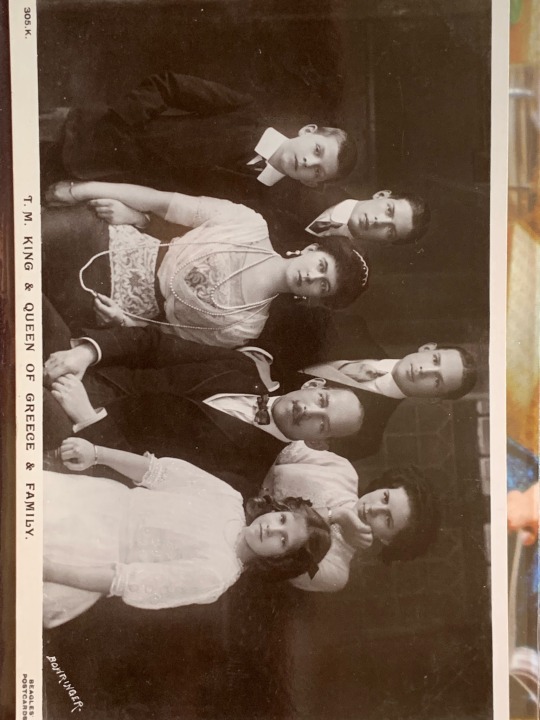
Frankly, I have no idea how I ended up with so many Astrid postcards. 🤭
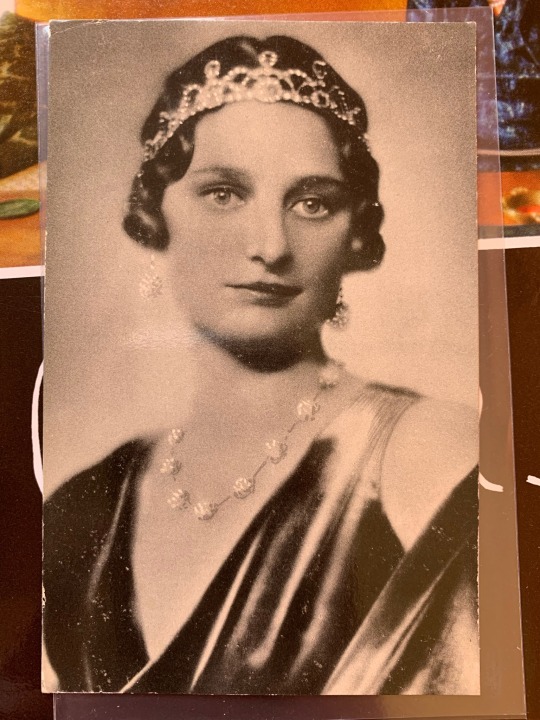
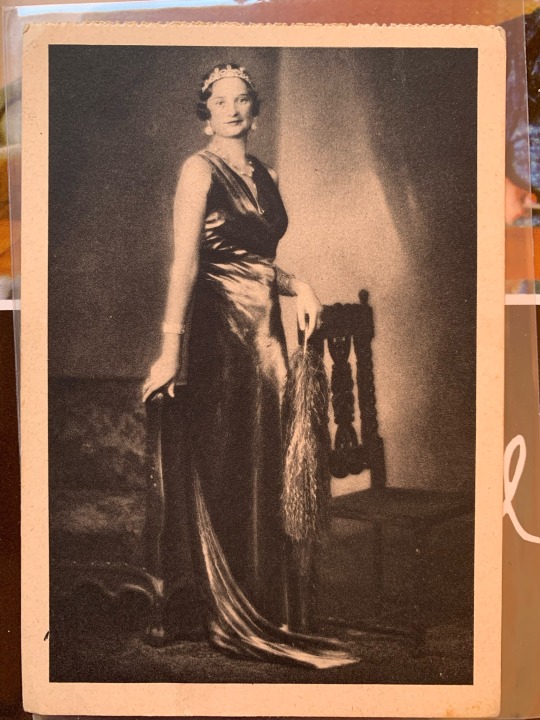


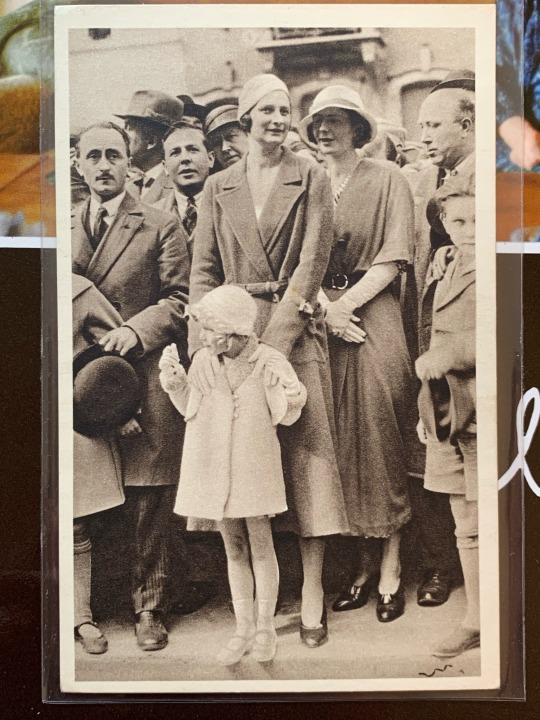
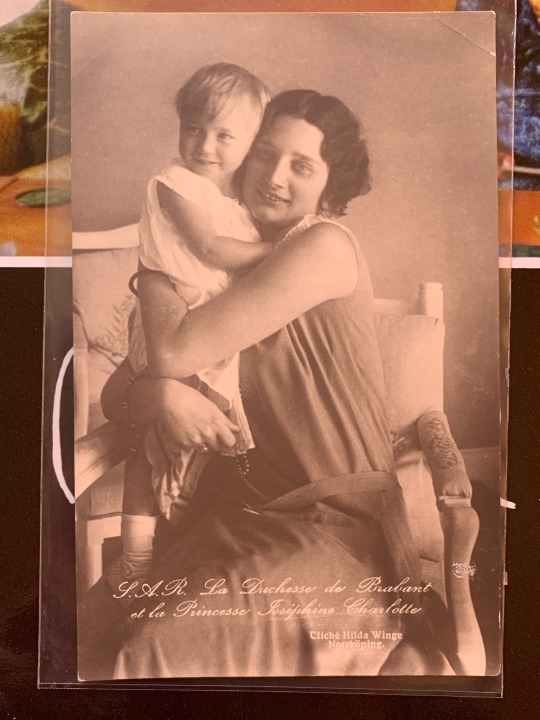
To be continued.
29 notes
·
View notes
Text





Royal Tiaras Highlights: The Prussian Diamond Tiara
The tiara was made by the German court jeweler, Koch, as a wedding gift to Princess Viktoria Louise in May 1913. Viktoria was the only daughter of Kaiser Willhelm II and her marriage to Prince Ernst August on Hanover meant the union of two German royal houses that had long been enemies.
The piece was then gifted to Viktoria and Ernst’s daughter, Princess Friederike, on occasion of her wedding to Prince Paul of Greece and Denmark, later King Paul of the Hellenes, in 1938. The tiara was then passed onto Princess Sophia of Greece and Denmark, later Queen Sofia of Spain, and it remains in possession of the Spanish Royal Family ever since.
Via The Court Jeweller
#tiaras highlights#spanish royal family#srf#royal tiaras#royal jewels#royal jewelry#queen sofia#queen letizia
38 notes
·
View notes
Text


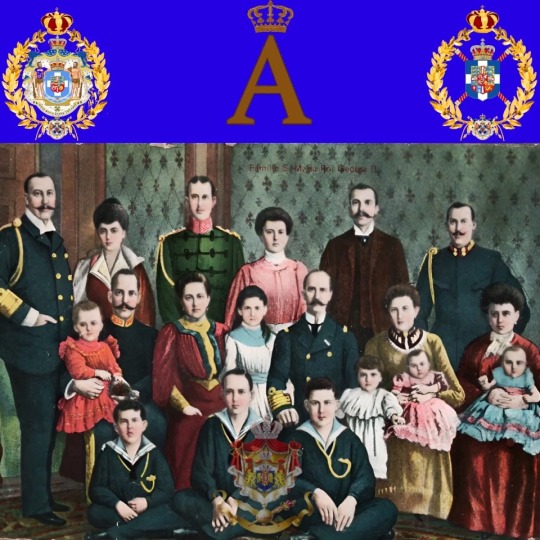

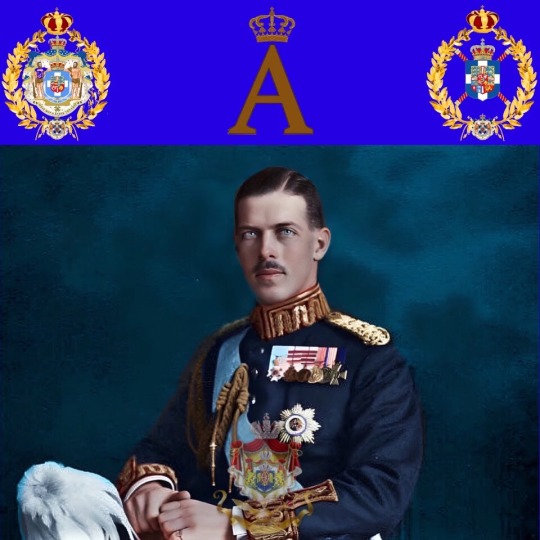



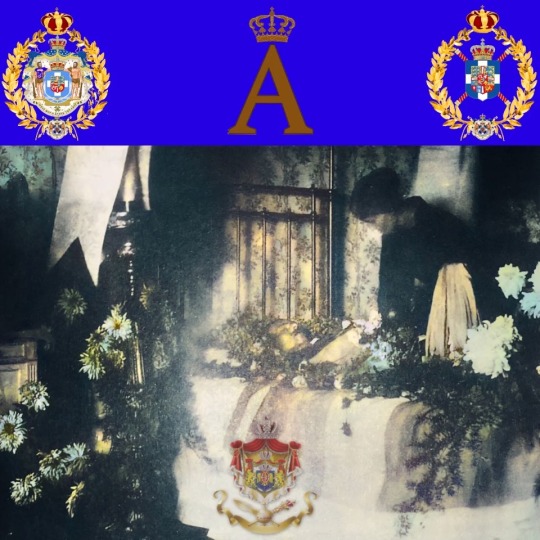

The 25th of October is 103 years since the death of HM King Alexander I of Hellenes (1 August 1893 – 25 October 1920)
Alexander was King of Greece from 11 June 1917 until his death in 1920.
The second son of King Constantine I, Alexander was born in the summer palace of Tatoi on the outskirts of Athens. He succeeded his father in 1917, during World War I, after the Entente Powers and the followers of Eleftherios Venizelos pushed King Constantine and his eldest son, Crown Prince George, into exile. Having no real political experience, the new king was stripped of his powers by the Venizelists and effectively imprisoned in his own palace. Venizelos, as prime minister, was the effective ruler with the support of the Entente. Though reduced to the status of a puppet king, Alexander supported Greek troops during their war against the Ottoman Empire and Bulgaria. Under his reign, the territorial extent of Greece considerably increased, following the victory of the Entente and their Allies in the First World War and the early stages of the Greco-Turkish War of 1919–1922.
Alexander controversially married the commoner Aspasia Manos in 1919, provoking a major scandal that forced the couple to leave Greece for several months.
The government allowed the couple to return to Greece in mid-1920. Although their marriage was legalized, Aspasia was not recognized as queen, but was instead known as "Madame Manos".At first, she stayed at her sister's house in the Greek capital before transferring to Tatoi,and it was during this period that she became pregnant with Alexander's child.
Alexander's daughter by Aspasia Manos, Alexandra , was born five months after his death. Initially, the government took the line that since Alexander had married Aspasia without the permission of his father or the church, his marriage was illegal and his posthumous daughter was illegitimate. However, in July 1922, Parliament passed a law which allowed the King to recognize royal marriages retroactively on a non-dynastic basis.That September King Constantine I —at Sophia's insistence—recognized his son's marriage to Aspasia and granted her the style of "HRH Princess Alexander of Hellenes Princess of Denmark ".Her daughter (Constantine I's granddaughter) was legitimized as HRH princess of Greece and Denmark, and later married King Peter II of Yugoslavia in London in 1944. They had one child: Alexander, Crown Prince of Yugoslavia.
Alexander visited the newly acquired territories of West Thrace, and on 8 July 1920 the new name for the region's main town—Alexandroupoli (meaning "city of Alexander" in Greek)—was announced in the king's presence. The city's previous name of Dedeagatch was considered too Turkish
On 2 October 1920, Alexander was injured while walking through the grounds of the Tatoi estate. A domestic Barbary macaque belonging to the steward of the palace's grapevines attacked or was attacked by the king's German Shepherd dog, Fritz,and Alexander attempted to separate the two animals. As he did so, another monkey attacked Alexander and bit him deeply on the leg and torso. Eventually servants arrived and chased away the monkeys,and the king's wounds were promptly cleaned and dressed but not cauterized. He did not consider the incident serious and asked that it not be publicized.
That evening, his wounds became infected; he developed a strong fever and sepsis set in. His doctors considered amputating his leg, but none wished to take responsibility for so drastic an act. On 19 October, he became delirious and called out for his mother, but the Greek government refused to allow her to re-enter the country from exile in Switzerland, despite her own protestations. Finally, the queen dowager, Olga, George I's widow and Alexander's grandmother, was allowed to return alone to Athens to tend to the king. She was delayed by rough waters, however, and by the time she arrived, Alexander had already died of sepsis twelve hours previously at a little after 4 p.m. on 25 October 1920.The other members of the royal family received the news by telegram that night.
Two days later, Alexander's body was conveyed to Athens Cathedral, where it lay in state until his funeral on 29 October. Once again, the royal family were refused permission to return to Greece, and Queen Olga was the only member who attended.Foreign powers were represented by the Prince Regent of Serbia with his sister Princess Helen wife of John Constantinovich of Russia, the Crown Prince of Sweden with his uncle Prince Eugene, Duke of Nericia, and Rear-Admirals Sir George Hope of the United Kingdom and Dumesnil of France, as well as members of the Athens diplomatic corps.
After the cathedral service, Alexander's body was interred on the grounds of the royal estate at Tatoi.The Greek royal family never regarded Alexander's reign as fully legitimate. In the royal cemetery, while other monarchs are given the inscription "King of the Hellenes, Prince of Denmark", Alexander's reads "Alexander, son of the King of the Hellenes, Prince of Denmark. He ruled in the place of his father from 14 June 1917 to 25 October 1920."According to Alexander's favorite sister, Queen Helen of Romania, this feeling of illegitimacy was also shared by Alexander himself, a sentiment that helps explain his mésalliance with Aspasia Manos
Την 25η Οκτωβρίου συμπληρώνονται 103 χρόνια από τον θάνατο του βασιλιά των Ελλήνων Αλέξανδρου Α΄ (1 Αυγούστου 1893 – 25 Οκτωβρίου 1920)
Ο Αλέξανδρος ήταν βασιλιάς της Ελλάδας από τις 11 Ιουνίου 1917 μέχρι το θάνατό του το 1920.
Ο δεύτερος γιος του βασιλιά Κωνσταντίνου Α΄, ο Αλέξανδρος γεννήθηκε στο θερινό ανάκτορο του Τατοΐου στα περίχωρα της Αθήνας. Διαδέχτηκε τον πατέρα του το 1917, κατά τη διάρκεια του Α' Παγκοσμίου Πολέμου, αφού οι δυνάμεις της Αντάντ και οι οπαδοί του Ελευθέριου Βενιζέλου ώθησαν στην εξορία τον βασιλιά Κωνσταντίνο και τον μεγαλύτερο γιο του, τον διάδοχο Γεώργιο. Μη έχοντας πραγματική πολιτική εμπειρία, ο νέος βασιλιάς αφαιρέθηκε από τις εξουσίες του από τους βενιζελικούς και ουσιαστικά φυλακίστηκε στο παλάτι. Ο Βενιζέλος, ως πρωθυπουργός, ήταν ο αποτελεσματικός ηγεμόνας με την υποστήριξη της Αντάντ. Αν και περιορίστηκε στο καθεστώς ενός βασιλιά-μαριονέτα, ο Αλέξανδρος υποστήριξε τα ελληνικά στρατεύματα κατά τη διάρκεια του πολέμου τους εναντίον της Οθωμανικής Αυτοκρατορίας και της Βουλγαρίας. Επί της βασιλείας του, η εδαφική έκταση της Ελλάδας αυξήθηκε σημαντικά, μετά τη νίκη της Αντάντ και των Συμμάχων της στον Πρώτο Παγκόσμιο Πόλεμο και τα πρώτα στάδια του ελληνοτουρκικού πολέμου του 1919-1922.
Ο Αλέξανδρος παντρεύτηκε αμφιλεγόμενα την απλοϊκή Ασπασία Μάνο το 1919, προκαλώντας ένα μεγάλο σκάνδαλο που ανάγκασε το ζευγάρι να εγκαταλείψει την Ελλάδα για αρκετούς μήνες.
Η κυβέρνηση επέτρεψε στο ζευγάρι να επιστρέψει στην Ελλάδα στα μέσα του 1920. Αν και ο γάμος τους νομιμοποιήθηκε, η Ασπασία δεν αναγνωρίστηκε ως βασίλισσα, αλλά ήταν γνωστή ως «Μαντάμ Μάνος». Στην αρχή, έμεινε στο σπίτι της αδερφής της στην ελληνική πρωτεύουσα πριν μετακομίσει στο Τατόι, και την περίοδο αυτή έγινε έγκυος στο παιδί του Αλέξανδρου.
Η κόρη του Αλέξανδρου από την Ασπασία Μάνου, η Αλεξάνδρα, γεννήθηκε πέντε μήνες μετά τον θάνατό του. Αρχικά, η κυβέρνηση υιοθέτησε τη γραμμή ότι αφού ο Αλέξανδρος είχε παντρευτεί την Ασπασία χωρίς την άδεια του πατέρα του ή της εκκλησίας, ο γάμος του ήταν παράνομος και η κόρη του νόθα. Ωστόσο, τον Ιούλιο του 1922, το Κοινοβούλιο ψήφισε νόμο που επέτρεπε στον Βασιλιά να αναγνωρίζει αναδρομικά τους βασιλικούς γάμους σε μη δυναστική βάση. Εκείνο τον Σεπτέμβριο,ο Κωνσταντίνος —με την επιμονή της Σοφίας— αναγνώρισε το γάμο του γιου του με την Ασπασία ��αι της παραχώρησε το στυλ "ΑΒΥ Πριγκίπισσα Αλέξανδρου των Ελλήνων Πριγκίπισσα της Δανίας". Η κόρη της (η εγγονή του Κωνσταντίνου Α') νομιμοποιήθηκε ως ΑΒΥ πριγκίπισσα της Ελλάδας και της Δανίας και αργότερα παντρεύτηκε τον βασιλιά Πέτρο Β' της Γιουγκοσλαβίας στο Λονδίνο το 1944. Απέκτησαν ένα παιδί: τον Αλέξανδρο, διάδοχο της Γιουγκοσλαβίας.
Ο Αλέξανδρος επισκέφθηκε τα πρόσφατα αποκτηθέντα εδάφη της Δυτικής Θράκης και στις 8 Ιουλίου 1920 το νέο όνομα για την κύρια πόλη της περιοχής —Αλεξανδρούπολη (που σημαίνει «πόλη του Αλεξάνδρου» στα ελληνικά)— ανακοινώθηκε παρουσία του βασιλιά. Το προηγούμενο όνομα της πόλης Dedeagatch θεωρήθηκε πολύ τουρκικό
Στις 2 Οκτωβρίου 1920, ο Αλέξανδρος τραυματίστηκε ενώ περπατούσε στους χώρους του κτήματος Τατοΐου. Ένας οικόσιτος μακάκος Barbary που ανήκε στον οικονόμο των αμπελιών του παλατιού επιτέθηκε ή δέχθηκε επίθεση από τον Γερμανικό Ποιμενικό σκύλο του βασιλιά, Φριτς, και ο Αλέξανδρος προσπάθησε να χωρίσει τα δύο ζώα. Καθώς το έκανε, μια άλλη μαϊμού επιτέθηκε στον Αλέξανδρο και τον δάγκωσε βαθιά στο πόδι και τον κορμό. Τελικά έφτασαν υπηρέτες και έδιωξαν τους πιθήκους, και οι πληγές του βασιλιά καθαρίστηκαν και ντύθηκαν αμέσως, αλλά δεν καυτηριάστηκαν. Δεν θεώρησε το περιστατικό σοβαρό και ζήτησε να μην δημοσιοποιηθεί.
Εκείνο το βράδυ, οι πληγές του μολύνθηκαν. ανέπτυξε δυνατό πυρετό και εμφανίστηκε σήψη. Οι γιατροί του σκέφτηκαν να ακρωτηριάσουν το πόδι του, αλλά κανένας δεν ήθελε να αναλάβει την ευθύνη για μια τόσο δραστική πράξη. Στις 19 Οκτωβρίου, παραληρούσε και φώναξε ��η μητέρα του, αλλά η ελληνική κυβέρνηση αρνήθηκε να της επιτρέψει να ξαναμπεί στη χώρα από την εξορία στην Ελβετία, παρά τις δικές της διαμαρτυρίες. Τελικά, η κηδεμόνα της βασίλισσας, Όλγας, χήρα του Γεωργίου Α' και γιαγιά του Αλέξανδρου, επετράπη να επιστρέψει μόνη στην Αθήνα για να φροντίσει τον βασιλιά. Ωστόσο, καθυστέρησε από τα ταραγμένα νερά, και όταν έφτασε, ο Αλέξανδρος είχε ήδη πεθάνει από σήψη δώδεκα ώρες πριν, λίγο μετά τις 4 μ.μ. στις 25 Οκτωβρίου 1920. Τα άλλα μέλη της βασιλικής οικογένειας έλαβαν τα νέα με τηλεγράφημα εκείνο το βράδυ.
Δύο ημέρες αργότερα, η σορός του Αλέξανδρου μεταφέρθηκε στον Καθεδρικό Ναό Αθηνών, όπου παρέμεινε στην κατάσταση μέχρι την κηδεία του στις 29 Οκτωβρίου. Για άλλη μια ��ορά, η βασιλική οικογένεια αρνήθηκε να επιστρέψει στην Ελλάδα και η βασίλισσα Όλγα ήταν το μόνο μέλος που παρευρέθηκε. Οι ξένες δυνάμεις εκπροσωπήθηκαν από τον Πρίγκιπα Αντιβασιλέα της Σερβίας με την αδελφή του Πριγκίπισσα Ελένη, σύζυγο του Ιωάννη Κωνσταντίνοβιτς της Ρωσίας, τον διάδοχο της Ρωσίας Σουηδία με τον θείο του Πρίγκιπα Ευγένιο, Δούκα της Νερίσιας, και τους Αντιναύαρχους Sir George Hope του Ηνωμένου Βασιλείου και Dumesnil της Γαλλίας, καθώς και μέλη του διπλωματικού σώματος της Αθήνας.
Μετά τη λειτουργία του καθεδρικού ναού, η σορός του Αλεξάνδρου ενταφιάστηκε στο βασιλικό κτήμα στο Τατόι. Η ελληνική βασιλική οικογένεια ποτέ δεν θεώρησε τη βασιλεία του Αλεξάνδρου ως απολύτως νόμιμη. Στο βασιλικό νεκροταφείο, ενώ σε άλλους μονάρχες δίνεται η επιγραφή «Βασιλιάς των Ελλήνων, Πρίγκιπας της Δανίας», του Αλεξάνδρου γράφει «Αλέξανδρος, γιος του Βασιλιά των Ελλήνων, Πρίγκιπας της Δανίας. Κυβέρνησε στη θέση του πατέρα του από το 14 Ιουνίου 1917 έως 25 Οκτωβρίου 1920.
#kingconstantine#danishroyalfamily#crownprincepavlos#queenannemarie#greek royal family#house of romanov#greekroyals#crownprincessmariechantal#danishroyals#princeconstantinealexios
2 notes
·
View notes
Text
January 13

[1334] Henry II of Castile, King of Castile and León (1369-79), born in Seville, Spain.
[1505] Joachim II Hector, Elector of Brandenburg (1535-71), born in Cölln, Germany.
[1610] Archduchess Maria Anna of Austria, Electress of Bavaria by marriage to Maximilian I, Elector of Bavaria, born in Graz, Duchy of Styria.
[1865] Princess Marie of Orléans, French Princess by birth and Danish Princess by marriage to Prince Valdemar, born in Ham, London, England.
[1938] Tord Grip, Swedish football player and manager, born in Ytterhogdal, Sweden.
[1939] Jacek Gmoch, Polish football player, trainer and manager, born in Pruszków, Poland.
[1947] Carles Rexach, Spanish-Catalan football winger and manager, born in Pedralbes, Barcelona, Spain.
[1960] Takis Lemonis, Greek footballer and manager, born in Colonus, Athens, Greece.
[1962] Trace Adkins, American country singer and actor, born in Sarepta, Louisiana, United States.
[1966] Patrick Dempsey, American actor, born in Lewiston, Maine, United States.
[1968] Mike Whitlow, English football defender and coach (U-18 at League Two club Mansfield Town), born in Northwich, England.
[1970] Frank Kooiman, Dutch football goalkeeper, born in Vlaardingen, Netherlands.
[1977] Orlando Bloom, English actor, born in Canterbury, England.
[1980] Akira Kaji, Japanese football defender, born in Minamiawaji, Hyogo, Japan.
[1980] Nils-Eric Johansson, Swedish football defender, born in Stockholm, Sweden.
[1989] Bryan Arguez, American soccer defensive midfielder, born in in Miami, Florida, United States.
[1990] Liam Hemsworth, Australian actor, born in Melbourne, Victoria, Australia.

[703 AD] Empress Jitō, the 41st monarch of Japan, dies.
[858 AD] Æthelwulf, King of Wessex (839-858), dies.
[888 AD] Charles III, the Fat (Charles Le Gros) Emperor of the Carolingian Empire from 881-888, dies at about 49.
[1330] Frederick I (III), the Fair, Duke of Austria and Styria (from 1308) as well as the anti-King of Germany (1314-1325) and then the co-King until his death.
[1363] Meinhard III, Count of Gorizia-Tyrol, dies.
[1735] Princess Polyxena of Hesse-Rheinfels-Rotenburg, second wife of Charles Emmanuel, Prince of Piedmont, Queen of Sardinia (1730-35), dies at 28.
[1797] Duchess Elisabeth Christine of Brunswick-Wolfenbüttel-Bevern, Queen of Prussia and Electress of Brandenburg as the wife of Frederik II the Great, dies at 81.
[1879] Henry the Navigator, Prince of the Netherlands, 3rd son of King William II of the Netherlands, dies at 58.
[1932] Sophia of Prussia, Queen Consort of the Hellenes (1913-17) and (1920-22) as the wife of Constantine I of Greece, dies at 61.
[2004] Harold Shipman (Doctor Death), British GP and prolific serial killer, commits suicide by hanging himself in his cell at HM Prison Wakefield at 57.
[2014] Bobby Collins, Scottish football midfielder and manager, dies at 82.
[2017] Antony Armstrong-Jones, Lord Snowdon, British photographer and ex-husband of Princess Margaret, dies at 86.
#on this day in history#on this day#otdih#otd#january#football history#football#birthdays#rest in peace#january 13#carles rexach#trace adkins#patrick dempsey#orlando bloom#nils-eric johansson#bryan arguez#liam hemsworth#æthelwulf#charles iii the fat#charles le gros#polyxena#harold shipman#doctor death#antony armstrong-jones#lord snowdon
0 notes
Photo

Princess Sophia of Prussia - Queen consort of King Constantine I of Greece, ca. 1890.
#Princess Sophia of Prussia#Queen Sophia of Greece#Queen Sophia of the Hellenes#princess sophie of prussia#Queen sophie of greece#1890s#1880s#colored photography#b&w picture coloring#digital coloring#german royalty#German royal family#german royals#british royal family#British Royalty#greek royal family#greek royalty#greek royals
64 notes
·
View notes
Text

Another version of the engagement photo of Princess Sophie of Prussia and Crown Prince Constantine of the Hellenes. Late 1880s.
Source: Wikimedia Commons
#greek royalty#queen sophia of the hellenes#queen sophia of greece#king constantine i of the hellenes#king constantine i of greece
29 notes
·
View notes
Text
Listen, I know that a lot of Queen Victoria’s Grandchildren married each other, however the fact that her Granddaughters look so much alike and then married their cousins is unnerving.
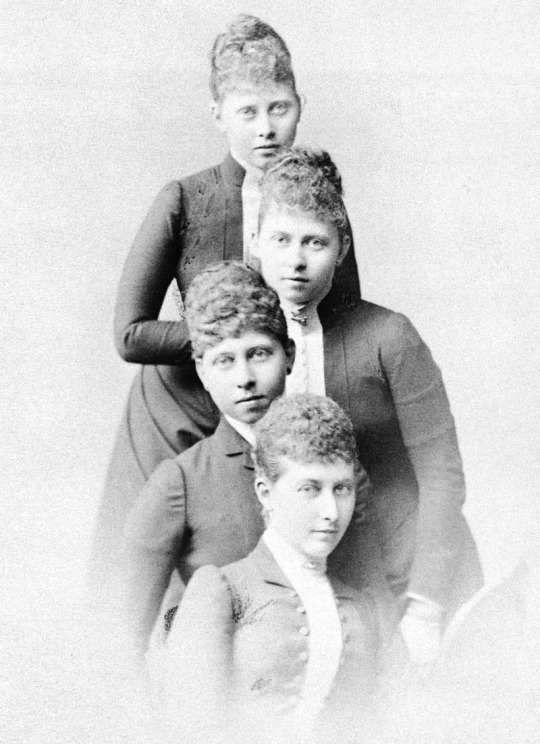
Top to Bottom: Princesses Margaret, Sophia, Victoria, and Charlotte of Prussia

Left to Right: Princesses Irene, Victoria, Elisabeth, and Alix of Hesse
Above are the Daughters of Victoria, Princess Royal
Below are the Daughters of Princess Alice of the United Kingdom
#Charlotte Duchess of Saxe-Meiningen#Viktoria Princess Adolf of Schaumburg-Lippe#Sophie#Queen of the Hellenes#Margaret Landgravine of Hesse#Princess Charlotte of Prussia#Princess Viktoria of Prussia#Sophia of Prussia#Princess Margaret of Prussia#Princess Victoria of Hesse and by Rhine#Victoria Marchioness of Milford Haven#Grand Duchess Elizabeth Feodorovna of Russia#Princess Elisabeth of Hesse and by Rhine#Princess Irene of Hesse and by Rhine#Irene Princess Henry of Prussia#Alix Empress of Russia#Alix of Hesse#Alexandra Feodorovna
14 notes
·
View notes
Text
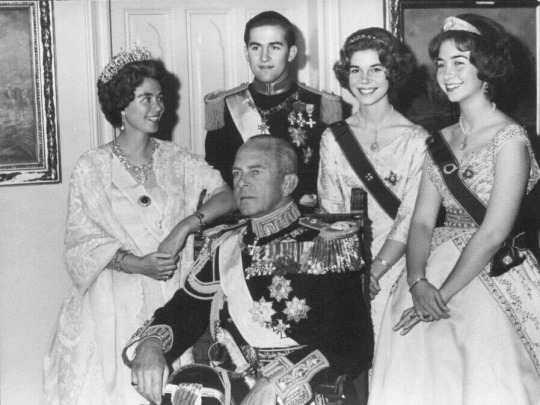
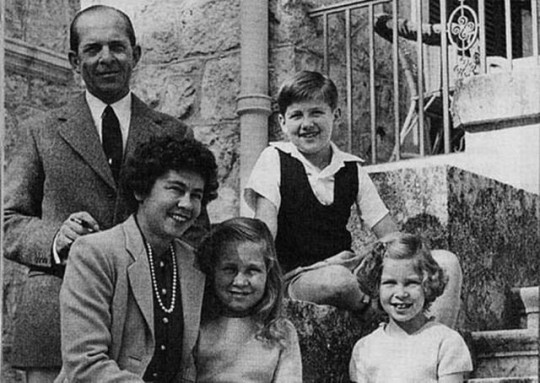


The Greek Royal Family (1947-1960s)
King Pávlos and consort Queen Frederica with their children Prinkípissa Sophia, Diadochos Konstantínos, and Prinkípissa Eiríni at Tatoi, Greece.
#greece#royalty#monarchy#greek royal family#tatoi#tatoi palace#the hellenes#kingdom of greece#king paul#pavlos#queen frederica#frederica of hanover#princess friederike#hanover#constantine ii#king constantine ii#prince constantine#princess sophia#princess irene#queen sofia#doña sofía#glücksburg#schleswig holstein sonderburg glucksburg#house of glucksburg
43 notes
·
View notes
Text

Sophia of Prussia, Queen Consort of the Hellenes, with two of her children, Helen and Paul, in 1902.
💌 "Once, when my little brother Paul, then three years old, was riding with us in the cart, we were speeding down the hill, Alexander steering the cart with his feet, and the speed increasing dizzyingly every second. Suddenly the cart lurched horribly, left the road, and fell about two meters into some tangled bushes of ferns and blackberries. Then, a terrible silence followed, which was so long-lasting that I froze with horror at the thought that my little brother had died in this accident. What a relief I felt when I heard him burst into high-pitched screams, so loud that our parents, alarmed, rushed out of the house to the spot which was several hundred yards away.”
Source: Helen, Queen Mother of Romania by Arthur Gould Lee.
#sophia of prussia#queen sophia of greece#helen of greece and denmark#king paul of greece#greek royal family#greek royalty#greek history
25 notes
·
View notes
Text

Princess Sophia of Prussia, later Queen of the Hellenes, 1871.
14 notes
·
View notes
Text


Aunt Mary Teck and May are staying with me for a couple of days. May has your rooms, it is always a pang for me to see anyone else in them, but you will not mind May using them, I know how much you like her. It is indeed pleasant to have them, especially as everyone here says May is your image. She is so sweet and charming and sensible, and her being like my Sophie drew me towards her.
The Empress Frederick writes to Sophie, letters 1889 - 1901
Royal Collection Trust / © Her Majesty Queen Elizabeth II 2022
#the book is linked if you wish to read their letters:)#empress frederick#queen sophia of the hellenes#queen mary
59 notes
·
View notes
Photo

Wilhelm II Hohenzollern, the last German Emperor (Kaiser) and King of Prussia, with his wife Augusta Victoria of Schleswig-Holstein, his sister Sophia of Prussia Queen consort of the Hellenes, and her daughter Helen of Greece and Denmark. They were in Corfù.
41 notes
·
View notes
Photo

Alexandra of Yugoslavia (25 March 1921 – 30 January 1993) was, by marriage to King Peter II, the last Queen of Yugoslavia.
Posthumous daughter of King Alexander of Greece and his morganatic wife Aspasia Manos, Alexandra was not part of the Greek royal family until July 1922, when at the behest of Queen Sophia, a law was passed which retroactively recognized marriages of members of the royal family, although on a non-dynastic basis; in consequence, she obtained the style and name of Her Royal Highness Princess Alexandra of Greece and Denmark. At the same time, a serious political and military crisis, linked to the defeat of Greece by Turkey in Anatolia, led to the deposition and exile of the royal family, beginning in 1924. Being the only members of the dynasty allowed to remain in the country by the Second Hellenic Republic, the princess and her mother later found refuge in Italy, with Dowager Queen Sophia.
After three years with her paternal grandmother, Alexandra left Florence to continue her studies in the United Kingdom, while her mother settled in Venice. Separated from her mother, the princess fell ill, forcing Aspasia to make her leave the boarding school where she was studying. After the restoration of her uncle, King George II, on the Hellenic throne in 1935, Alexandra stayed in her native country several times but the outbreak of the Greco-Italian War, in 1940, forced her and her mother to settle in Athens. The invasion of Greece by the Axis powers in April–May 1941, however, led to their moving to the United Kingdom. Again exiled, Alexandra met in London the young King Peter II of Yugoslavia, who also went into exile after the invasion of his country by the Germans.
Quickly, Alexandra and Peter II fell in love and planned to marry. Opposition from both Peter's mother, Maria, and the Yugoslav government in exile forced the couple to delay their marriage plans until 1944, when they finally celebrated their wedding. A year later, Alexandra gave birth to her only son, Alexander, Crown Prince of Yugoslavia. However, the happiness of the family was short-lived: on 29 November 1945, Marshal Tito proclaimed the Socialist Federal Republic of Yugoslavia and Alexandra, who had never set foot in her adopted country, was left without a crown. The abolition of the Yugoslav monarchy had very serious consequences for the royal couple. Penniless and unable to adapt to the role of citizen, Peter II turned to alcoholism and multiple affairs with other women. Depressed by the behavior of her husband, Alexandra neglected her son and made several suicide attempts. After the death of Peter II in 1970, Alexandra's health continued to deteriorate. She died of cancer in 1993 and her remains were buried in the Royal Cemetery Plot in the park of Tatoi in Greece, before being transferred to the Royal Mausoleum of Oplenac in 2013.
4 notes
·
View notes